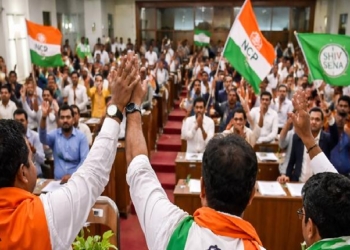Aizawl: The Mizoram government plans to promote Mizo traditional attires by urging the people of the state to wear them more often, officials said on Thursday.
A senior official of the General Administration Department (GAD) said that in order to evoke pride in their culture, the Mizoram government has once again urged all the people, including government employees, to wear ethnic attires more often to promote the community’s traditions, customs and folklore.
“We have issued a notification once again requesting all, specially government employees including those at Public Sector Undertakings, boards, bodies and agencies to wear traditional Mizo attires at the workplace at least once a week, preferably every Wednesday. This is expected to inculcate closeness to their Mizo culture and tradition, and simultaneously promote innovations in designs and production of cultural attires,” the GAD official told IANS.
Wearing of Mizo attire at the workplace is, however, voluntary, the official pointed out and said that a fresh notification was issued on the advice of Chief Minister Lalduhoma.
The notification has requested all administrative heads and heads of all departments to bring this to the notice of all officials and employees under their charge.
For the last many years the state government has been asking people and government employees to wear Mizo attires more frequently in order to promote the Mizo community’s pride in its rituals, traditions, customs and folklore.
The Mizoram government ahead of the ‘Chapchar Kut’ festival in February this year has urged everyone in the state to promote traditional attires by wearing them during the festivities.
Chapchar Kut is one of the most important spring festivals in Mizo society.
After the clearing of the forests for ‘jhum’ cultivation (slash and burn method of farming), this festival is celebrated with great fervour by the people of Mizoram.
People dressed in bright costumes with attractive headgears sing, dance and make merry during the festival, which is normally celebrated during February-March every year.
Nearly all Mizo festivals revolve around tilling of the land.
Mim Kut, Chapchar Kut and Pawl Kut are the three major festivals in Mizoram all of which are in some way or the other connected with agricultural activities.
The Mizos, irrespective of age and gender, participate in these festivals.
Decked in colourful dresses, young men and women go on a dancing spree which sometimes last all through the night.
Mim Kut is celebrated in August-September in the wake of harvesting of the maize crop.
Dedicated to the memory of their deceased relatives, the festival is underlined by a spirit of thanksgiving and remembrance of the years.
The first harvest is placed as an offering on a raised platform built in the memory of the dead.
The Pawl kut festival is a post-harvest carnival, celebrated during December-January.
Again, a mood of thanksgiving is evident, because the difficult task of tilling and harvesting is over.
Community feasts are organised and dances are performed. Mothers with their children sit on memorial platforms and feed one another.
This custom, which is also performed during Chapchar Kut, is known as Chhawnghnawt. Drinking of rice-beer is also part of the festival.
These two days of festivities are followed by a day of complete rest when no one goes out to work.
(Sujit Chakraborty can be contacted at sujitchakrabortyne@gmail.com)
(IANS)

















